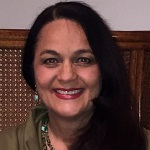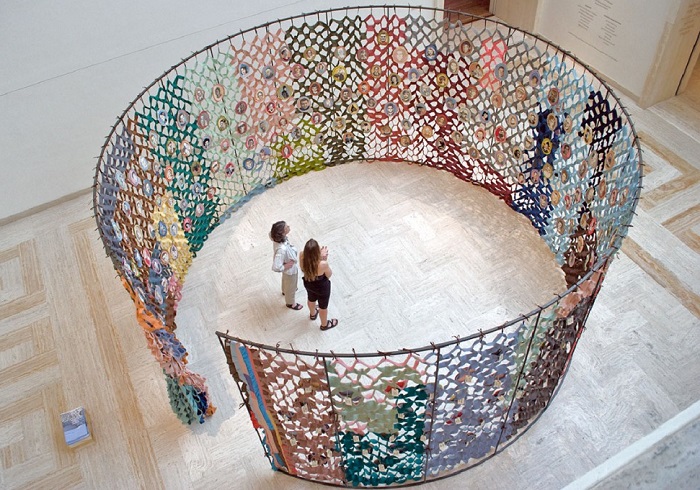 Lulani Arquette, Native Arts and Cultures Foundation
Lulani Arquette, Native Arts and Cultures Foundation
Title: President & CEO
Geographic scope: National, with offices in Oregon & Washington
2015 arts funding: $717,877
Staffing: 7 FTE
How has your career prepared you for your current role?
I’ve been managing organizations from an executive level for over 20 years and was also one of the co-founders of the Hawaii Leadership Center in Hawaii. Previous work involved working deeply in Native Hawaiian communities and the U.S. Congress, overseeing the development of programs for child/adult/elderly education, workforce development, social and cultural initiatives. This experience helped me in many ways to understand some of the challenges and the unique ways of working in indigenous communities.From my degree in drama and theatre throughout my career, I have worked extensively with artists and cultural practitioners. For example, in past work, we developed numerous projects with the business and education sectors to bring opportunities to artists and cultural practitioners in their communities. I was involved in some of the early efforts to organize Native Hawaiian self-determination and conducted over 100 community meetings and an election process for over 80,000 voters in a four year period. I’ve learned that how we communicate matters and developing emotional intelligence and sensitivity is critical when you’re working in complex and diverse communities. I’ve also learned how important it is to seek adequate information from key multiple sources when making decisions, and that difficult decisions sometimes have to be made amongst conflicting viewpoints. Working in nonprofits and partnering with philanthropy and multiple collaborators in my past career helped me prepare for the breadth of diversity, complexity and beauty that is present in Native communities and tribal nations across the country.
What are the most important arts and culture challenges you see in your geographic funding area?
Native arts and cultures are rooted in tradition, values, and cultural history. Yet arts practice is always evolving. Native artists and communities are innovating and sharing their voices in increasingly unique and formidable ways. They are a creative force to be reckoned with that are challenging stereotypes of what American Indian, Native Hawaiian and Alaska Native arts embody. Artists, scholars and culture bearers are uniting to provide accurate accounts of Native histories, and inform the public on Native challenges and accomplishments. The ultimate goal is to keep our living cultures thriving, inspire cooperation to solve challenges and develop meaningful relationships between diverse peoples, places and professions.
- Funding for arts and cultures has always been difficult, let alone for Native arts and cultures. We are an intermediary funding foundation for Native arts and cultures, and our founding directors designated us to be a national funder. There is not enough support for intermediaries who have knowledge of Native artists and experience working in tribal communities. More co-funding support and collaboration between private philanthropy and intermediary funders is needed to coordinate more effective strategies for arts and cultures with Native artists, organizations and tribal communities. Intermediaries are a valuable and necessary resource in the philanthropic field.
- There are unique sets of issues with supporting urban vs. rural Native artists and communities that require different approaches. For example, sheer distance and transportation can be an issue in rural tribal communities which prevents artists and culture bearers from accessing information meetings, collaborating more frequently on projects, and securing grant support. There has to be intentional planning and technical support that will allow these barriers to be overcome.
- NACF is only eight years old, and creating ongoing awareness and visibility of NACF’s work and opportunities for Native artists and organizations across the nation can be difficult. Same goes for other native funders who support arts and cultures and have been operating much longer than NACF. There is so much social media saturation and information overload on all fronts that both funders and communities feel overwhelmed.

What are your core strategies for funding arts and culture?
- Grantmaking through our National Fellowships to individual Native artists; and through our Community Inspiration Program (CIP) where Native artists work with communities on issues of social and cultural importance. In 2014-2015, twenty total fellows were selected and four CIP projects were completed reaching 164,000 people. We will be selecting our seventh year of National Fellows this summer and continuing our CIP work. We are developing a mentor-apprentice fellow program and an effort with arts/culture organizations in tribal nations within the next year.
- Convening through support of artist led workshops, symposiums, and panels. In 2014-2015, NACF fellows participated in 142 convenings, exhibitions, performances and workshops in their communities and across the nation. We are hoping to bring our fellows and the field together in a future convening.
- Advocacy for greater understanding and support of Native communities and tribal nations (both urban and rural); and for deepening arts and cultures knowledge and awareness through presentations, panels and meetings with co-funders and other stakeholders. For example, staff and artists presented at several conferences this past year including NAASA (Native American Arts Studies Association), Western Arts Alliance, NPN/VAN (National Performance Network/Visual Arts Network). Efforts are underway to bring specific funders to several Native communities to increase access for Native artists and organizations.
With equity in grantmaking as context, how are you working to support more diverse arts and culture organizations?
We are already a funder and advocate of equity for Native arts and cultures. Many of the artists we support work with diverse populations and organizations both inside and outside their particular geographies. One area that we want to deepen our grantmaking is with Native arts and culture organizations located within tribal nations and we are currently developing a strategy for this with hopes of launching by the end of this year.
What’s been a big success in the arts and culture space for your organization?
Our National and Regional Fellowship Program has been highly successful. We now have a total of 80 fellows covering visual arts, literature, music and performing arts, traditional arts, and film; many who have continued to expand their careers, win other awards, work deeply in their communities and travel internationally. What excites me is to see the ongoing work and breadth of these artists (who we consider part of our “family”) and the potential to develop a future publication of their work, and help them to have greater access to residencies, mentorships, and convenings. What also inspires us is the possibility of creating a mentor/apprentice program to help emerging and newer artists develop their skills and arts practice and a pathway to national fellowships and awards. In order for Native artists and organizations to continue perpetuating Native cultures, and building understanding between diverse peoples of our region/nation, they need to continue honing their arts practice, practicing their cultures, and raising their visibility.
Our Community Inspiration Program (CIP) addresses the cultural inequities in our society by supporting artists and communities to bring their collective wisdom and knowledge to bear on some of the most challenging concerns of this century. The work is intended to be thought provoking and educational. In the CIP, artists and communities make connections and learn from one another. The work encourages indigenous perspectives, intercultural appreciation, and diverse approaches. The goal is that artists and communities engaging together will move into action with renewed hope and solutions using arts and cultures as a pathway to improve lives, build more resilient communities, and illuminate the future. We piloted four projects in 2014-2015 that were a great success and addressed issues of transborder migration, environmental sustainability, culture and science and community development.
What’s the biggest arts and culture opportunity or challenge your organization is tackling right now?
Capacity and reach is always an issue. As a national funder, the question is, "should we go wider and reach more artists and communities, or go deeper with fewer artists and communities?" Also, finding time, resources and capacity to gather and plan with other Native partners in the field in more meaningful ways is challenging. We successfully convened over 100 people in the Native arts and cultures field in 2012, but haven’t been able to repeat that effort yet.
Lulani Arquette is president and CEO of Native Arts and Cultures Foundation, joining us this month for our virtual roundtable with arts funders.